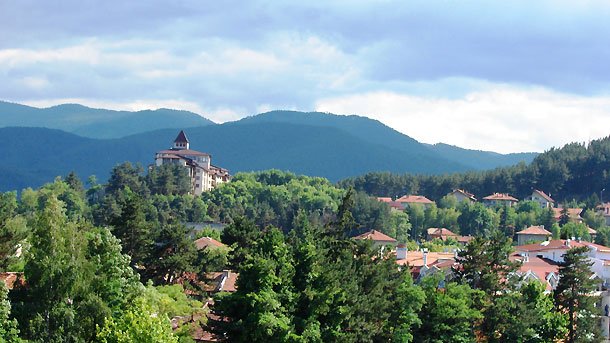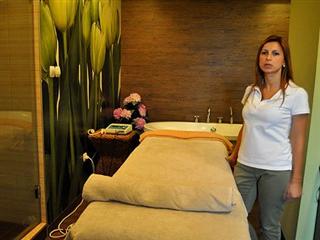The fifth anniversary since the town of Velingrad was voted the Spa Capital of the Balkans was marked with various celebrations. The star of the town, situated in Rhodope Mountains in Southwestern Bulgaria, shone in 2008 when it received the prestigious distinction personally by the President of the International Hotel and Restaurant Association Dr. Ghassan Aidi. Ever since then, the town of Velingrad went through a historical upsurge and many local hotels with rich clientele became Spa hotels.

The word spa originates from the Latin phrase sanus per acquam which means health through water treatment. Such healing water, mainly mineral, springs in abundance in Velingrad and the surrounding area. There are over 80 mineral springs in the town, considered as one of the biggest natural wealth of Velingrad. They feed the local spa centers, many open air and indoor pools in the town as well as the only active public baths built back in the 18th century. The water is a real blessing for people with

rheumatic fever, neurological, stomach problems and many other illnesses. Let alone its relaxing, emollient and rejuvenating effect. The local spa centers count on these effects and offer series of rehabilitation and refreshing treatments. In fact, the town of Velingrad is not the only Bulgarian spa resort with international fame. However, experts claim that quality of the services offered in Velingrad is higher as compared to those in similar spa centers in Bulgaria and the neighboring countries. Let alone the abundance and diversity of the healing waters, the healthy mountain climate and perfect hotels in this town. Besides, according to experts, Velingrad is the fastest developing spa center in Bulgaria. Within several years only Velingrad turned from a quiet countryside town with typical of the socialist period architecture into a wonderful spa resort with many hotels. The family hotels resembling houses from the National Revival Period, alpine-type huts with ridged roofs and modern glass-coated complexes are part of the rich color of the town. Moreover, the town of Velingrad is covered in greenery and bird singing could be heard everywhere.

Stanimir Stankov who is the President of the National Association for Spa and Wellness Tourism has more: “The interest towards the town is huge, because its hotels provide good conditions. This type of tourism including spa treatments is not that cheap and mainly rich people and ones with sound finances can afford it. Currently, around 15 hotels in Velingrad fall within the top category range. There are also cheaper, yet very nice family hotels. Indeed, anywhere you go, you will find similar treatment programs, but what makes Velingrad different to other spa centers are the innovative spa packages”, says Stanimir Stankov.

The hotels in Velingrad are competing to offer all kinds of weight-loss and beauty programs using a wide range of products from the cosmetic industry and the folk medicine. Some of these programs are patents of the local spa centers. For instance, along with the traditional treatment procedures with the popular mineral water, one of the local hotels offers a special anti-wrinkle therapy entitled Thracian Gold which uses real golden particles. Other hotels offer aromatic bath for two, filled with Mursalski tea. This miraculous herb grows in abundance along the slopes of the Rhodope Mountains near Velingrad. Just like in may other spa centers in Bulgaria, the spa procedures using oil-yielding rose are widely used and are very popular amongst foreign tourists. The new spa hit in Velingrad is the sheep wool and milk treatment. Wool is used for rubbing the feet of the tourists and the warm fresh milk-for full body massage.

However, if you are short of money for such treats, you should by all means go to the local mineral pools where you will definitely feel refreshed. The mineral water in Velingrad could also heal some of the body pains as well. Here is another curious detail. The mineral water in Velingrad is not used for spa and balneology only. Hot mineral water is used for heating of some public buildings, including a town church. The hottest mineral spring is in Kamenitsa district with a temperature of 91C. Here, local women wash their clothes and rugs with homemade soap and when the season of pickled vegetables comes, half of the neighborhood gathers around the spring to can their vegetables in the hot waters of the mineral spring.

English version: Kostadin Atanasov